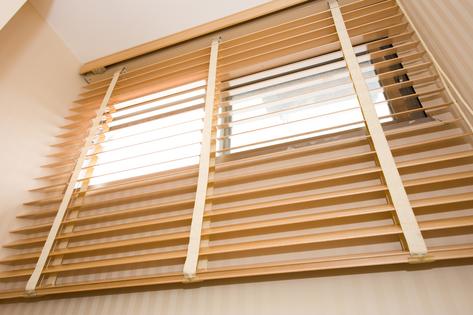Do It Yourself or Not: Install a wood blind
There’s something about real wood blinds that sets them apart from composite or faux wood; and for many, it’s worth the extra cost to add the warmth of wood to a window treatment. Wood blinds add both form and function to any design decor and are a long-term investment worth considering.
You’ll find them sold in a variety of shades from tinted white to natural pine to deep ebony; the slats range in width from 1 3/8 inches to 2 3/8 inches. The more traditional wood blinds feature ladder tapes that bind the slats together in a color blending or contrasting with the shade of the wood slats.
You can customize the shade with decorative tapes in stylish colors and designs that coordinate with your furnishings. Most wood blinds include a valance that matches the slats and completes the treatment.
When you’re considering any window blind, decide how you want it installed; that determines the width you order. One way is mounted inside the window framing; the other is outside the frame on the window trim or wall. To mount the blind inside the window framing, make sure there's enough space for the depth of the top of the blind, called its headrail. You'll find wood blinds sold at window design shops and home centers. Type “wood window blinds” in any search engine to find them online.
An installer will charge $463, which includes labor and material, to install a 40-inch-wide-by-60-inch-high honey-colored wood blind with 1 3/8-inch slats. You can buy the blind for $265 and install it using an electric drill to do the job.
Pro Cost: $463 — DIY Cost: $265 — Pro time: 3.0
DIY Time: 4.5 — DIY Savings: $198 — Percent Saved: 43%
========
To find more DIY project costs and to post comments and questions, visit www.diyornot.com and m.diyornot.com on smartphones.
©2025 Gene and Katie Hamilton. Distributed by Tribune Content Agency, LLC.





























Comments